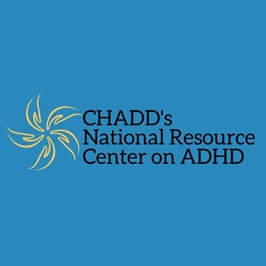ADHD Across the Lifetime
ADHD symptoms often start in childhood and continue into adulthood, but they may look different in adults. Just as ADHD symptoms and the way they impact daily living may change across the lifetime, needs for support and treatment may differ for adults and children.
Symptoms of ADHD in Adults

ADHD is often thought of as a childhood disorder. Increasingly it is recognized that adults with ADHD can still struggle with
- Managing their attention
- Completing lengthy tasks unless interesting
- Staying organized
- Controlling their behavior
- Hyperactive symptoms, such as feeling internally restless and fidgety
When to Seek Help

Get information and support from the National Resource Center on ADHD
ADHD symptoms can be severe and can cause difficulties with daily life. Without the right treatment and support, ADHD may seriously impact one’s health and well-being. Especially in times when stress and demands are high, ADHD can cause difficulty with
- Daily tasks
- Social relationships
- Consistency in healthy behaviors such as exercise, proper nutrition, and good sleep
- Avoiding health risks such as substance use, infections, and injuries.
CDC partners with the National Resource Center on ADHD, a program of CHADD—Children and Adults with Attention-Deficit/Hyperactivity Disorder, to educate and support people with ADHD and their healthcare providers, educators, and families.
Diagnosis and Treatment
The percentage of adolescent and adult females as well as male adults receiving prescriptions for stimulants used to treat ADHD symptoms increased during 2016–2021, particularly during the COVID-19 pandemic (2020–2021).
The first step in diagnosing ADHD is to talk with a primary healthcare provider who may diagnose ADHD themselves or may make a referral to a mental health provider. Diagnosing ADHD usually includes a checklist for rating ADHD symptoms and looking at the person’s history of behavior and experiences. The provider will determine if ADHD symptoms were present before age 12 years and may ask for permission to gather information from friends and family. A medical and psychological exam may be needed to rule out other health problems that can cause symptoms like ADHD or that are often present with ADHD, such as anxiety, depression, sleep problems, alcohol or substance misuse, or learning disabilities.
Treatment for ADHD can include medication—most commonly stimulant medication—as well as therapy and other behavioral treatments, or a combination of methods. What works best depends on the person and their family. Effective treatment plans will include close monitoring, follow-ups, and making changes, if needed, along the way.
The American Professional Society for ADHD and Related Disorders (APSARD) is currently working to create US Guidelines for Adults with ADHD.
Research
CDC is also working to learn more about how to support the health and wellbeing of adults with ADHD by including questions about ADHD in surveys of adults. These questions allow better insight into how many adults have an ADHD diagnosis, what other types of mental and physical health conditions they may have, and what treatments they may receive.